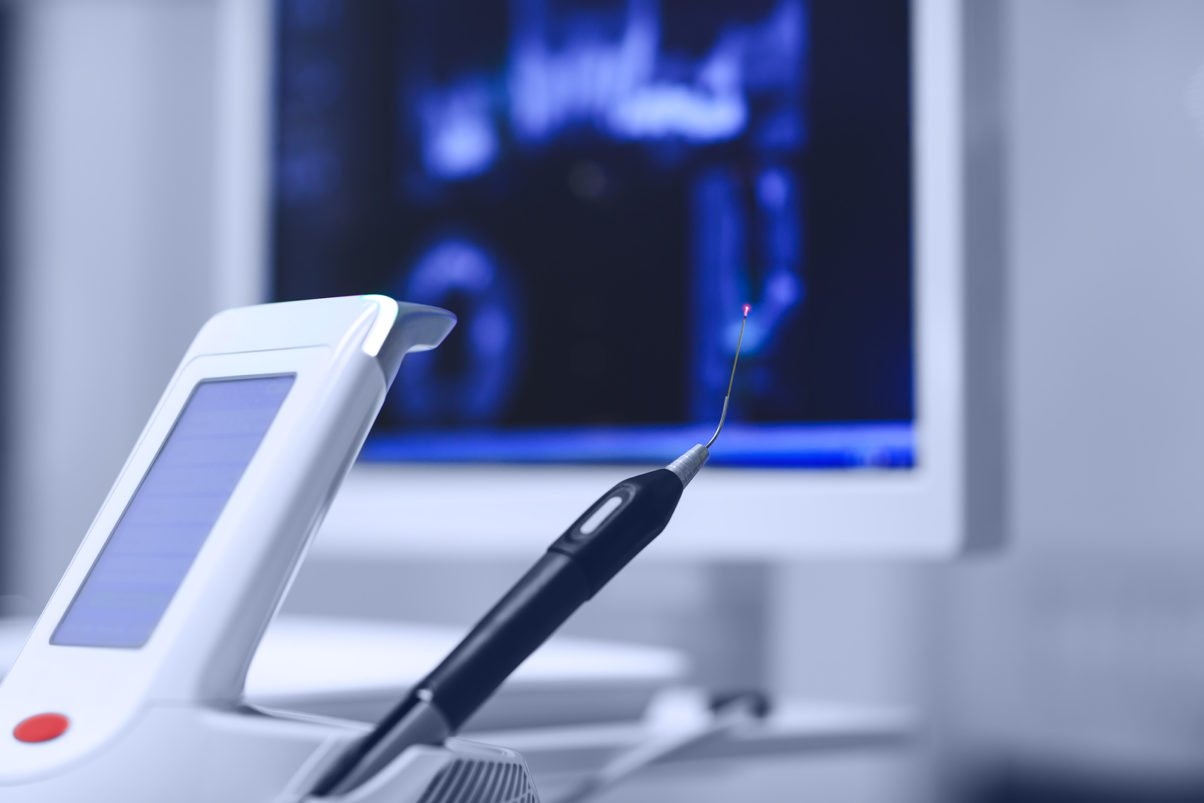Laser surgery is an innovative and effective solution for treating common oral and dental issues. Here’s how modern dental professionals use lasers to create a safer more comfortable experience for patients.
Lasers in Dentistry
Modern medical professionals commonly use lasers, which are intensely focused beams of light, to eliminate tissue in very small amounts. Since different types of tissue absorb wavelengths of light in different ways, scientists have been able to develop lasers with light wavelengths that can safely and effectively treat tissues within the mouth.
Dentists typically use either soft tissue or hard tissue lasers, depending on the treatment. Each type of laser uses different wavelengths to cut different types of tissue. Primarily used for teeth, hard tissue lasers are great for detecting cavities, coping with tooth sensitivity and prepping teeth for fillings.
On the other hand, soft tissue lasers are used to cut into soft tissue and seal the exposed blood vessels at the same time. Dentists often use them to lengthen crowns, reshape gums, treat restricted tongue movement and remove folds in soft tissues caused by dentures.
How Dental Lasers Are Used
Because lasers are so versatile, dental professionals are able to use them to treat a variety of concerns, including:
- Canker and cold sore pain
- Root canal infections
- Exposing wisdom teeth
- Periodontal disease
- Gum inflammation
- Gum reshaping
- Biopsies
Dental lasers can also be used to remove benign oral tumors, regenerate damaged nerves and eliminate throat tissue that causes sleep apnea. In certain instances, laser dentistry can be an ideal solution for children who are afraid or anxious about certain dental treatments.
What Are the Advantages of Laser Dentistry?
Dentists and patients value lasers because they reduce discomfort, improve healing times and make procedures go more smoothly. In addition to these benefits, laser dentistry also offers the following advantages:
- Patients are less likely to need sutures
- Anesthesia may not be needed for certain procedures
- Lasers result in less blood loss compared to traditional surgery
- Since lasers cause less damage to gums, healing times are much shorter
- Because the laser sterilizes gums, infections are less likely
What to Expect
Most patients are surprised to learn that laser treatments are quite similar to other common dental procedures, such as fillings. Patients usually receive small amounts of anesthesia to guard against discomfort. During the procedure, patients do not feel the vibrations they would normally experience during drilling. Bleeding tends to be very minor, and patients generally feel no discomfort. Recovery is typically much smoother, since patients experience less inflammation than they would with a scalpel procedure. There’s also a lower likelihood of infection, since lasers sterilize and seal tissue as they cut.


 Previous Article
Previous Article

